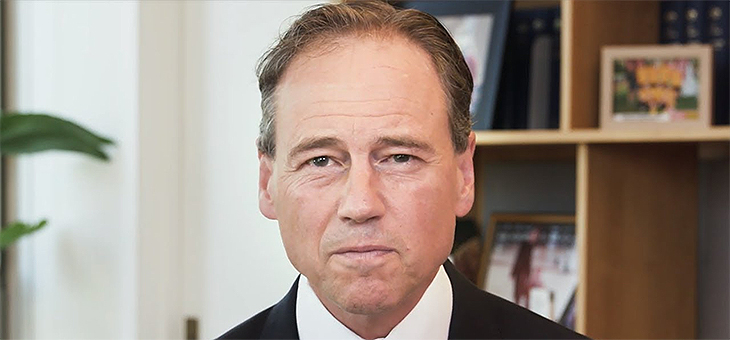The royal commission into aged care tried to shine a light into the failings of privatised aged care, but it is only now people are dying from COVID-19 that the issue is being taken seriously.
With 804 COVID-19 cases connected to the aged care sector in Victoria as of Wednesday morning, nurses from public and private hospitals and medics from the Australian Defence Force were called in to cover for staff across Melbourne. As of Wednesday morning, 56 people in aged care in Victoria had died after testing positive to the virus.
On Tuesday, Victorian premier Dan Andrews shone a light on the precarious situation in many privatised aged care homes when he said he would not let his “mum be in some of those places”.
“I cannot stand here and tell you that I have confidence that staff and management across a number of private sector aged care facilities are able to provide the care that is appropriate to keep their residents safe,” Mr Andrews said.
Federal health minister Greg Hunt hit back at the claims, saying that his own father received excellent care at a private aged care home.
“The idea that our carers, that our nurses are not providing that care, I think, is a dangerous statement to make. They are wonderful human beings and I will not hear a word against them,” Mr Hunt said.
On Wednesday morning, Prime Minister Scott Morrison admitted that the aged care situation in Victoria was very distressing but tried to downplay the deaths by suggesting that many in aged care homes were already close to death.
“Many years ago, it was quite different, but these days, particularly with the in-home aged care options, more Australians are choosing to remain at home,” Mr Morrison said.
“But those who have moved into aged care facilities are often moved in at a much more advanced stage. And all of us who have had to make those decisions in relation to loved ones understood that, and so I think that attaches to it a particular sensitivity in the challenges we’re now facing.
“Where there is sustained community transmission, it is inevitable that this will find its way into aged care facilities. When it rains, everyone gets wet,” Mr Morrison said.
“And that is what we’re seeing with broad-based community transmission in Victoria. As the [Victorian premier Daniel Andrews] rightly said, if you are ill, do not go to work. That is true if you work in a meat processing plant, it is true if you work in a chemist shop, it is true if you work in a restaurant, it is true if you’re a journalist, a politician, whoever you may be, an aged care worker especially.”
The many problems in the sector were highlighted by the aged care royal commission last year, which found the system failed to meet the needs of older citizens.
The Australian Nursing and Midwife Federation (ANMF) warned as early as March about the coming risks to the sector posed by the COVID-19 pandemic.
The ANMF said urgent action was required to increase the numbers of qualified nurses and carers working in the already understaffed sector.
ANMF assistant federal secretary Lori-Anne Sharp pointed out on 4 March that a high percentage of the workforce was casualised and needed more support.
“As we know, the aged care sector is already dangerously understaffed. A potential outbreak and consequent lockdowns in nursing homes could result in a depleted workforce, with reduced numbers of qualified staff on the ground caring for elderly residents,” Ms Sharp said at the time, in a chilling prediction of the exact situation in Victoria right now.
While these calls were largely ignored, as were Ms Sharp’s calls to ensure that all aged care facilities had enough protective personal equipment, the Fair Work Commission (FWC) also failed to take account of the dangerous aged care situation.
Back in April, unions were arguing for the commission to provide paid pandemic leave to casual workers in aged care and healthcare but the push was rejected.
Now that the situation has eventuated, the FWC this week reversed its decision, allowing paid pandemic leave to casual workers in the aged care sector from Wednesday.
In its ruling, the FWC said self-isolation was “especially critical” in aged care “because of the vulnerability of aged persons to COVID-19 fatalities”.
“Further … there is a real risk that employees who do not have access to leave entitlements might not report COVID-19 symptoms, which might require them to self-isolate, but rather seek to attend for work out of financial need,” the ruling said.
“This represents a significant risk to infection control measures. These matters weigh significantly in favour of the introduction of a paid pandemic leave entitlement.”
Do you think too many warnings were ignored with regard to the precarious aged care situation as the coronavirus crisis took hold? Should more be done to support aged care workers?
If you enjoy our content, don’t keep it to yourself. Share our free eNews with your friends and encourage them to sign up.
Related articles:
https://www.yourlifechoices.com.au/health/covid19/app-to-protect-aged-care-residents
https://www.yourlifechoices.com.au/health/your-health/australians-attitudes-towards-ageing
https://www.yourlifechoices.com.au/health/news/new-care-packages-a-drop-in-the-ocean

